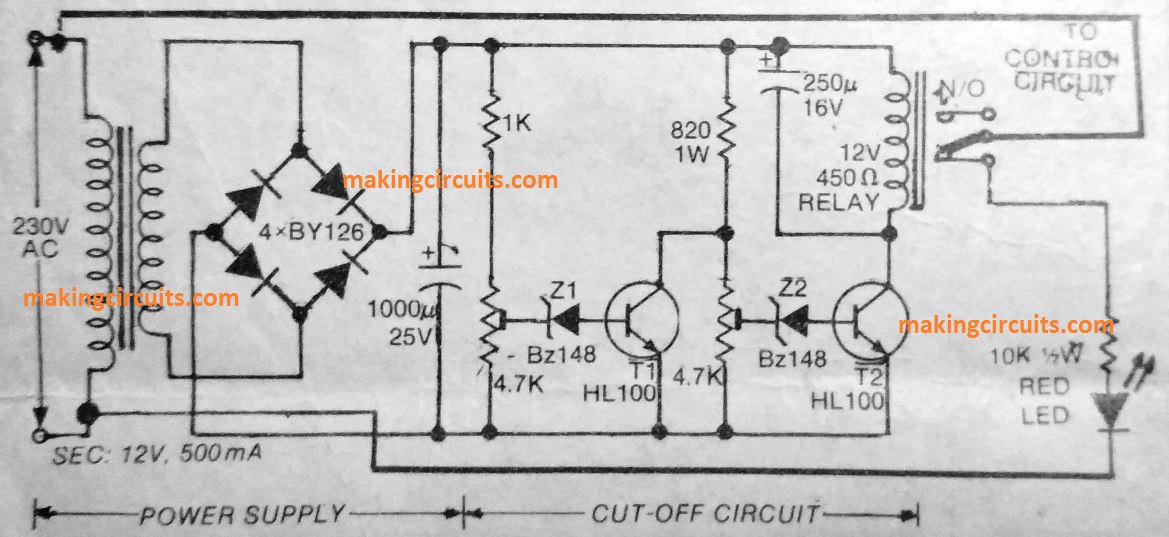This very simple two transistor circuit will ensure that your home electrical and appliances are never affected by abnormal voltage fluctuations. This circuit designed to cut off the 220V supply whenever an over voltage or under voltage situation is detected. Thus all your home sensitive devices and gadgets are full protected from an voltage hazard situation.
How much will this unit cost? Probably not more than a dollar.
In many countries sudden ups and downs in the mains voltage is quite common, and sometimes this may cause a permanent failure of the many costly electrical gadgets such TCV sets, refrigerator LED lamps which are not designed to tolerate high voltages over a certain limit.
The circuit explained here, when correctly set will offer a safe voltage operating zone as preferred by the user, and if the voltage tends to exceed beyond or fall below this limit, the relay will trip cutting off power to the appliance thereby safeguarding it from the expected dangers.

The proposed design is simple, easy to construct and inexpensive. It can be added to existing stabilizer units in which case the DC power supply can be extracted from the stabilizer circuit and only a few additional components including relay would be required to build the circuit.
How the Circuit Works
When the 220V or 120V mains supply is within the set limits, T2 will be conducting, rendering T1 in a non-conducting state.
When voltage is lower than the set limit, zener Z2 will not breakdown and therefore T2 cannot conduct, when results in deactivation of the relay.
This adjustment is done by setting up VR2.
During an over voltage condition, zener Z1 will breakdown and T1 will get into a conducting state, de-energizing the relay. This setting is done by adjusting VR1.
Here, the relay's "normally-Open" contact is used for controlling the appliance's voltage supply. When N/O contact is connected the appliance is able to get normal voltage supply, while during an abnormal voltage condition the N/O is cut off, prohibiting the supply to the appliance.
The LED attached across the N/C contact of the relay informs us about the cut off situation and also regarding the under or over voltage protection switched ON.
How to set VR 1 & VR 2 to 180V to 250V, is there is a way of identifying. Please explain
You will have to find out which DC voltage from the transformer corresponds to 180v and 250v, and then adjust the presets accordingly….
Vary good circuits. Valuable.
thank you!
whether this scheme works. I try it can’t work
yes it works
Sir,
Please sugest a equivalent zener diode for Bz 148.
Any value from 3 to 6V zener will do….